| Previous
Page |
PCLinuxOS
Magazine |
PCLinuxOS |
Article List |
Disclaimer |
Next Page |
Creating The ebook Version Of The PCLinuxOS Magazine
|
|
by YouCanToo
The tools I use: As you may know, I took over laying out the HTML version of the PCLinuxOS Magazine from Rudge. I also create the monthly version of the magazine, in two popular ebook formats: *.epub and *.mobi. I start the whole process using the articles supplied by the Editor (Parnote) and Assistant Editor (Meemaw). I begin by copying the information from the shared documents and paste them into a set of templates. Then I go about setting up the general format of the page, IE: paragraphs, syntax, images and music files. When checking the syntax of the documents, I specifically look for code that can conflict with the HTML layout. I also change things like smart quotes used in Google Docs to straight quotes used in HTML. Otherwise, you would see garbage. Once I have laid out all of the pages as per the PCLinuxOS Magazine article layout list, I upload that information to the server for review and approval from the editors. If they happen to spot errors in the layout or omissions of information, they send me an email telling me about the corrections required. I then make the corrections and re-upload the changed content to the server, where the editors once again go through checking everything. This happens until I get things right. Lucky for me, it doesn't happen a lot! Once the HTML format of the magazine has been accepted, I can get to work on laying out the ebook version of the magazine. Once again the ebook layout, like its HTML version of the magazine, uses a template for the basic layout. The content for the ebook comes directly from the magazine's HTML edition. Once again, I do this by cutting and pasting just the basic content into the template. At this point, I am using Kwrite to do most of the work, and normally have two windows open side by side.  There are some changes that are made to the ebook layout that the HTML version does not have or need. These occur in the links page. At this point, I have to convert all <a href="/201309/files/page01.html"> links to references like <a href="#page01">, and make sure there is a matching <a name="page01"> statement within the contents.  After copying and pasting all the pages in their proper place, I save the information and then open the saved file in Sigil. 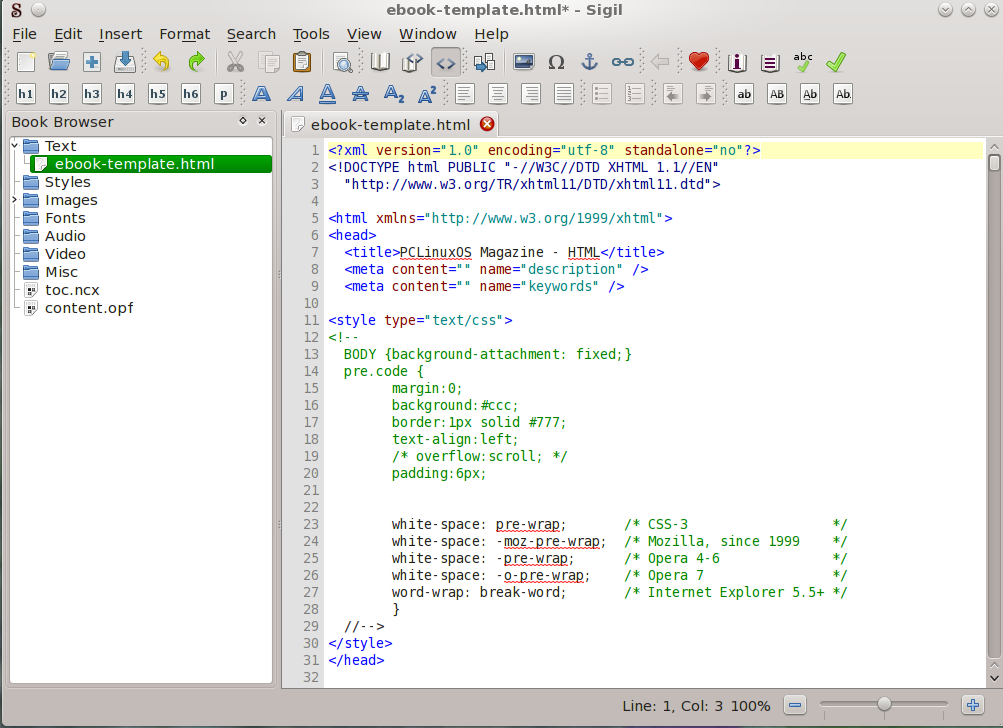 Once open, I search for the end tag for each page and insert a "split marker." 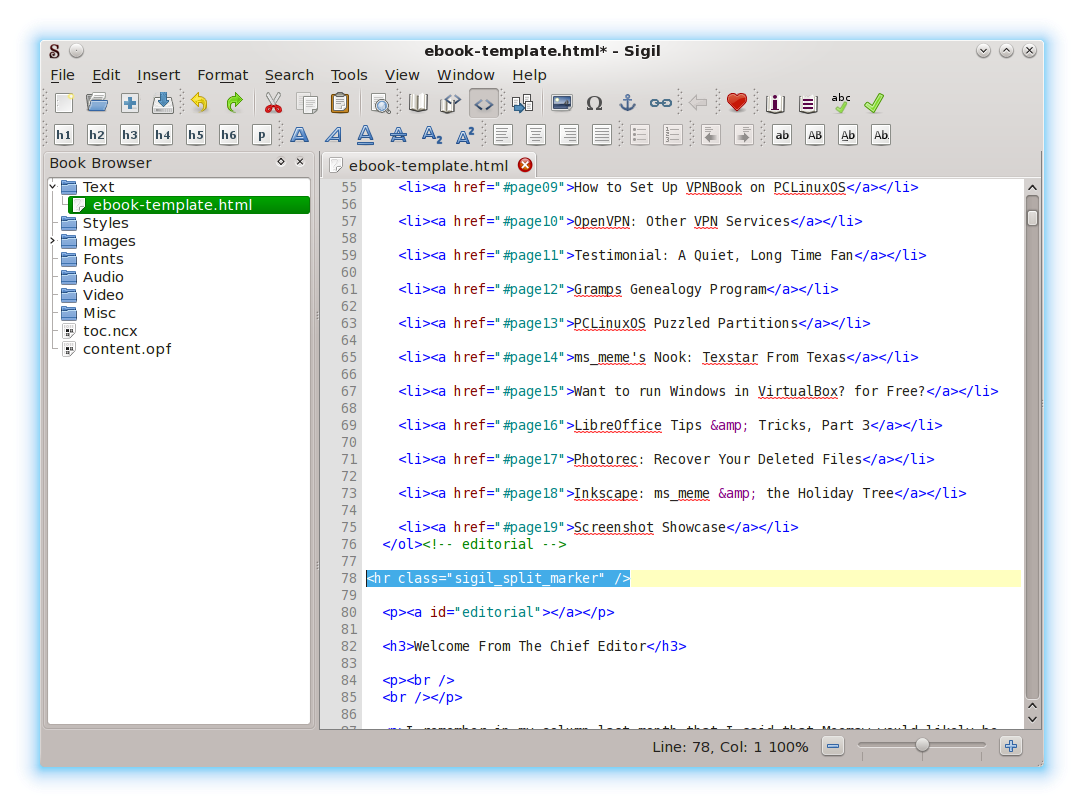 This marks the end of each page when you are viewing the ebook in your favorite reader. Once this is done, I simple save the file as "ebook-template.html." Now I open Calibre to finish things up and create the final epub and mobi versions. I add the book "ebook-template.html" file that I save from sigil. Once this has been imported into Calibre, I then edit the metadata of the file.  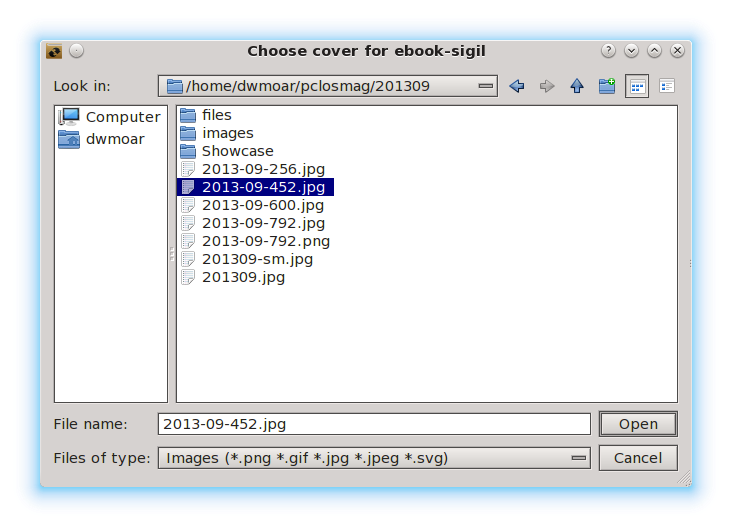 We now add the cover image and fill out any missing metadata, along with selecting the final ebook format. 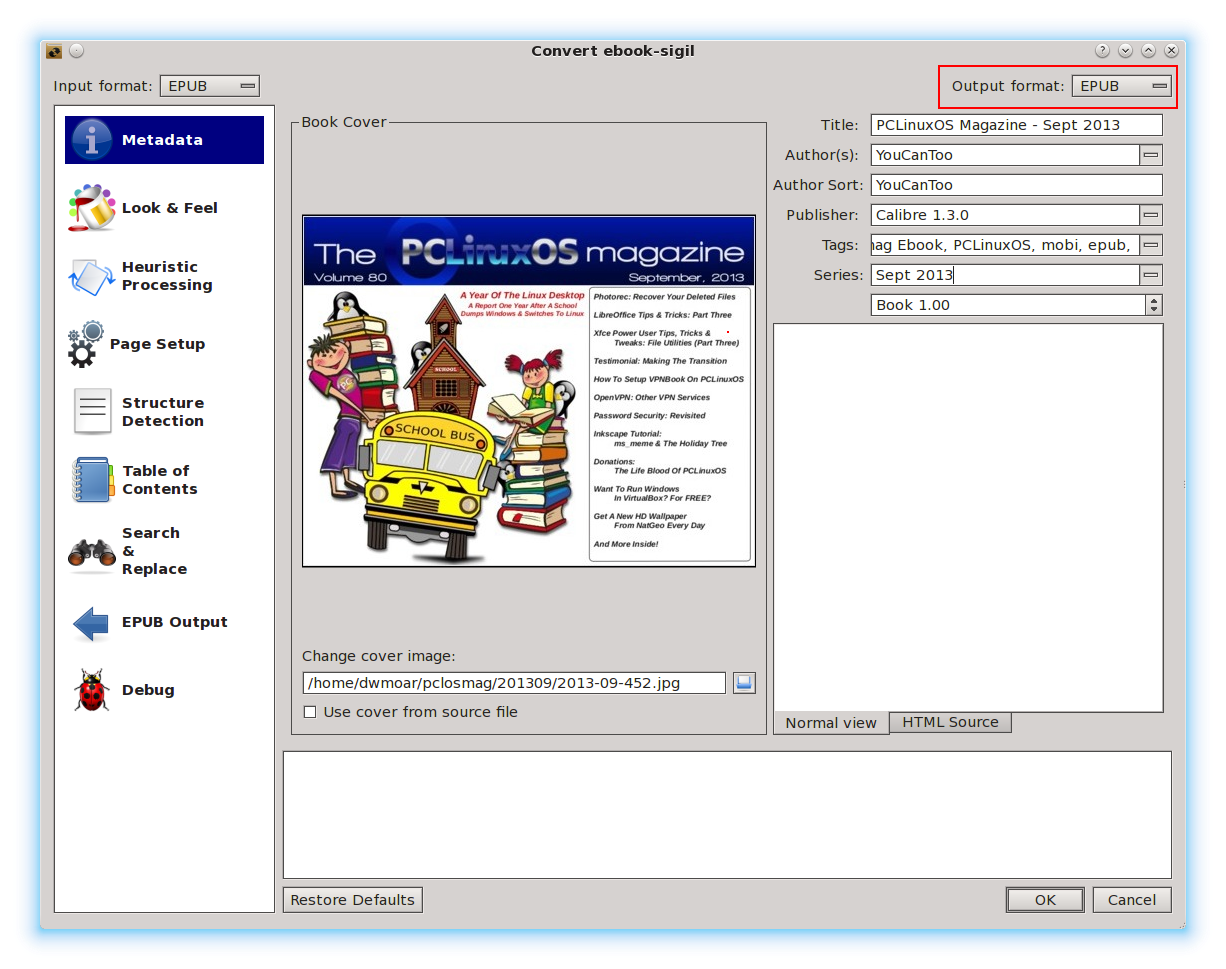 I then convert the file. We now click "OK" to start the conversion process. This may take some time depending on the speed of your computer and the size of the file you are converting. 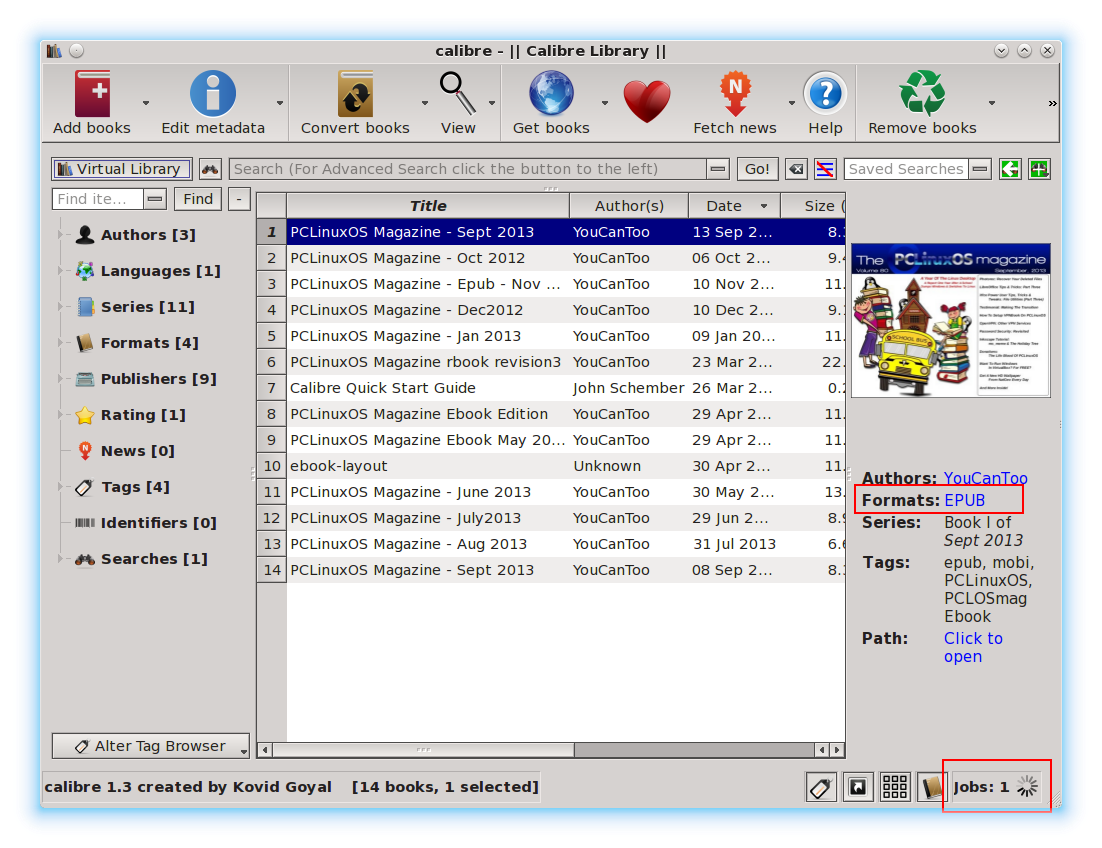 To make the .mobi format, we will repeat the process, except this time will will select the .mobi format to use. Now that we have finished converting the magazine to both the .epub and .mobi formats, the only thing left to do is rename the files and upload them to the proper place on the PCLinuxOS Magazine web server for your viewing enjoyment. Viewing the finished ebook using the Calibre built in ebook viewer:. 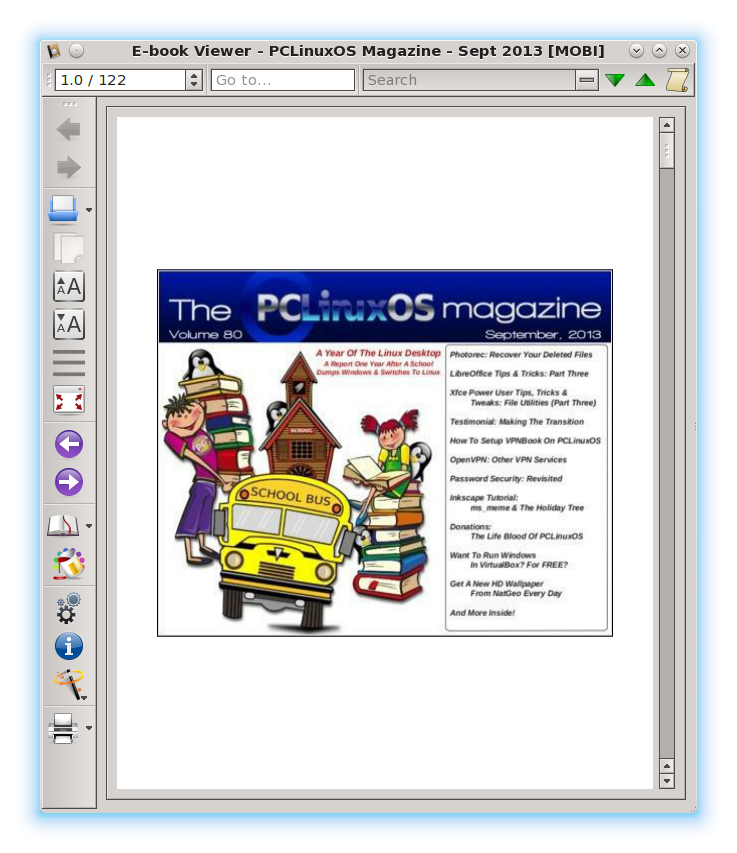 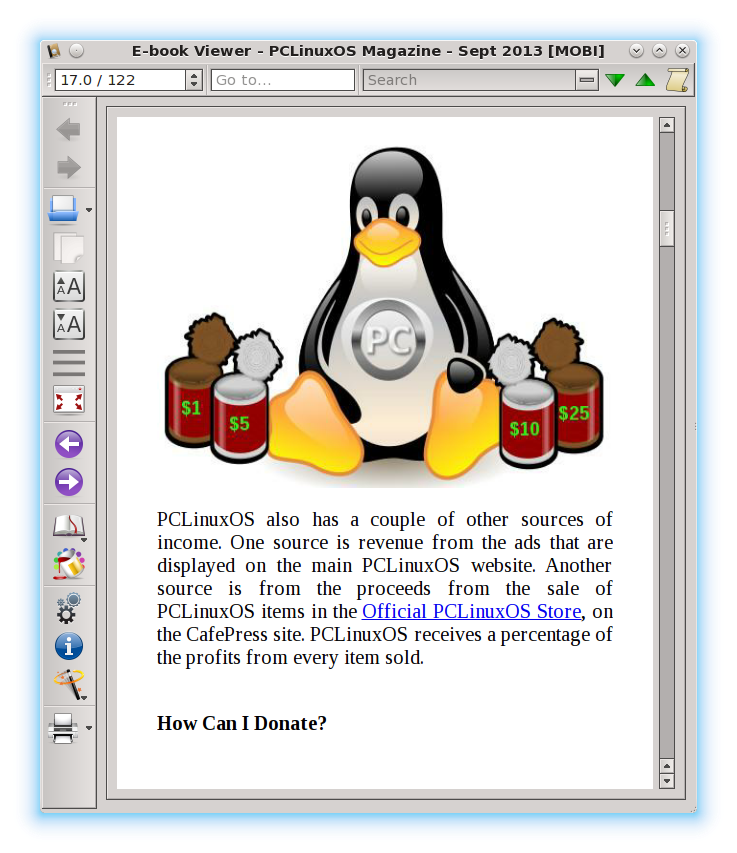
|





